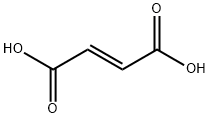Dioctyl(maleate)tin
- CAS NO.:16091-18-2
- Empirical Formula: C20H36O4Sn
- Molecular Weight: 459.21
- MDL number: MFCD00040922
- EINECS: 240-253-6
- SAFETY DATA SHEET (SDS)
- Update Date: 2024-12-18 14:15:32

What is Dioctyl(maleate)tin ?
Chemical properties
white powder
General Description
White powder.
Air & Water Reactions
Insoluble in water.
Reactivity Profile
Dioctyl(maleate)tin is in the family of tin compounds widely used as stabilizers for plastics, additives to paint(as antifouling agents). Some have catalytic properties. Examples include butyl tin, dibutyl tin oxide. Their main hazard is associated with their high toxicity, in skin adsorption or inhalation.
Fire Hazard
Flash point data for Dioctyl(maleate)tin are not available, however Dioctyl(maleate)tin is probably combustible.
Safety Profile
Moderately toxic by ingestion. When heated to decomposition it emits acrid smoke and irritating fumes. See also TIN COMPOUNDS
Properties of Dioctyl(maleate)tin
| Melting point: | 87-105°C |
| Boiling point: | 442.6±28.0 °C(Predicted) |
| Specific Gravity | 1.37 |
| Water Solubility | <0.1 g/100 mL at 22 ºC |
| Hydrolytic Sensitivity | 2: reacts with aqueous acid |
| Stability: | Stable. Combustible. Incompatible with strong oxidizing agents. |
| CAS DataBase Reference | 16091-18-2(CAS DataBase Reference) |
| EPA Substance Registry System | Dioctyltin maleate (16091-18-2) |
Safety information for Dioctyl(maleate)tin
| Signal word | Warning |
| Pictogram(s) |
 Exclamation Mark Irritant GHS07 |
| GHS Hazard Statements |
H302:Acute toxicity,oral |
Computed Descriptors for Dioctyl(maleate)tin
New Products
(S)-3-Aminobutanenitrile hydrochloride 4-Methylphenylacetic acid N-Boc-D-alaninol N-BOC-D/L-ALANINOL Tert-butyl bis(2-chloroethyl)carbamate 3-Morpholino-1-(4-nitrophenyl)-5,6-dihydropyridin- 2(1H)-one Furan-2,5-Dicarboxylic Acid Tropic acid 1-Bromo-3,5-Di-Tert-Butylbenzene S-2-CHLORO PROPIONIC ACID ETHYL ISOCYANOACETATE 2-Bromo-1,3-Bis(Dimethylamino)Trimethinium Hexafluorophosphate 4-IODO BENZOIC ACID 3-NITRO-2-METHYL ANILINE 1-(2,4-DICHLOROPHENYL) ETHANAMINE (2-Hydroxyphenyl)acetonitrile 4-Bromopyrazole 2-(Cyanocyclohexyl)acetic acid 4-methoxy-3,5-dinitropyridine 1-(4-(aminomethyl)benzyl)urea hydrochloride 2-aminopropyl benzoate hydrochloride diethyl 2-(2-((tertbutoxycarbonyl)amino) ethyl)malonate tert-butyl 4- (ureidomethyl)benzylcarbamate Ethyl-2-chloro((4-methoxyphenyl)hydrazono)acetateRelated products of tetrahydrofuran








You may like
-
 Dioctyl(maleate)tin 18% Tin CAS 16091-18-2View Details
Dioctyl(maleate)tin 18% Tin CAS 16091-18-2View Details
16091-18-2 -
 2033-24-1 98%View Details
2033-24-1 98%View Details
2033-24-1 -
 1975-50-4 98%View Details
1975-50-4 98%View Details
1975-50-4 -
 2-HYDROXY BENZYL ALCOHOL 98%View Details
2-HYDROXY BENZYL ALCOHOL 98%View Details
90-01-7 -
 2-Chloro-1,3-Bis(Dimethylamino)Trimethinium Hexafluorophosphate 221615-75-4 98%View Details
2-Chloro-1,3-Bis(Dimethylamino)Trimethinium Hexafluorophosphate 221615-75-4 98%View Details
221615-75-4 -
 61397-56-6 CIS BROMO BENZOATE 98%View Details
61397-56-6 CIS BROMO BENZOATE 98%View Details
61397-56-6 -
 14714-50-2 (2-Hydroxyphenyl)acetonitrile 98+View Details
14714-50-2 (2-Hydroxyphenyl)acetonitrile 98+View Details
14714-50-2 -
 118753-70-1 98+View Details
118753-70-1 98+View Details
118753-70-1
Statement: All products displayed on this website are only used for non medical purposes such as industrial applications or scientific research, and cannot be used for clinical diagnosis or treatment of humans or animals. They are not medicinal or edible.